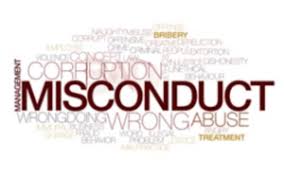The Court of Appeal decision in the Bell v Tavistock case.
This is a post by Sarah Phillimore. I will be discussing these issues at a webinar organised by EBSWA on September 30th. Please join us.
Summary
Over recent years, considerable debate has arisen over the consequences of medical intervention which aims to allow ‘gender dysphoric’ children to ‘transition’ from the body into which they were born, to better reflect their perceived ‘gender identity’. There are serious concerns that this kind of intervention is experimental, with no clear evidence base and carries significant risks for the child.
The debate culminated in 2020 with the challenge of Keira Bell by judicial review, against the lawfulness of the decision by the Tavistock and Portman NHS Foundation Trust (‘the Tavistock’) to agree that she could offer valid consent to medical transition, aged 16. The High Court determined that such cases should be brought to court for a ‘best interests’ decision, emphasising how unlikely it was for children under 16 to be ‘Gillick competent’ and therefore able to offer informed consent to medical transition, by way of puberty blockers and cross sex hormones.
The Tavistock appealed in June 2021 and the judgment was published today, September 17th 2021.
In brief, the Court of Appeal allowed the appeal, considering that the High Court had made findings on controversial and disputed facts, which was not the purpose of a judicial review and which is was not entitled to make. The court noted the real danger in situations involving ethical questions coming before the court on disputed evidence which is not capable of resolution in this arena. The court may attempt “to enunciate propositions of principle without full appreciation of the implications that these will have in practice, throwing into confusion those who feel obliged to attempt to apply those principles in practice.” (para 77). The decision about treatment must be made by the clinicians, child and parents. However, the Court of Appeal sounded a clear note of warning at paras 92 and 93 – clinicians must be aware of their ethical duties when determining a child’s informed consent and failure to do so will carry regulatory or even criminal consequences.
So where do we go from here?
The necessary debate about the implications of medical transition for children – particularly as the huge recent surge in referrals of teenage girls strongly suggests some kind of social contagion rather than pressing medical need – has been gravely hampered by a toxic and polarised atmosphere, whereby legitimate concerns about the welfare of children have been actively rejected as ‘bigotry’ or ‘transphobia’. However, in the run up to the first hearing in Bell and immediately afterwards, consideration of the welfare issues for children began to get more serious exposure.
Current NHS advice with regard to puberty blockers and cross sex hormones states that little is known about the long-term side effects of either treatment. Although some claim that puberty blockers are a physically reversible treatment, the psychological effects are not known. There are concerns about potential impact on the brain or bones. For boys, ‘pausing’ puberty may mean they do not develop enough penile or scrotal tissue to undergo later construction of a neo-vagina. Cross sex hormones may cause irreversible changes to the body – such as breast growth or deepening of the voice and temporary or permanent sterility.
The National Institute for Health and Care Excellence (NICE) (see ‘further reading’ below) has concluded that any potential benefits of gender-affirming hormones must be weighed against the largely unknown long-term safety profile of these treatments in children and adolescents with gender dysphoria. Other jurisdictions, such as Sweden, Finland and Australia are also raising concerns about the quality of the available evidence.
The High Court decision
The High Court held that in order for a child to be competent to give informed consent to puberty blockers, the child would have to understand, retain and weigh the following information:
- the immediate consequences of the treatment in physical and psychological terms;
- the fact that the vast majority of patients taking puberty blocking drugs proceed to taking cross-sex hormones and are, therefore, on a pathway to much greater medical interventions;
- the relationship between taking cross-sex hormones and subsequent surgery, with the implications of such surgery;
- the fact that cross-sex hormones may well lead to a loss of fertility;
- the impact of cross-sex hormones on sexual function;
- the impact that taking this step on this treatment pathway may have on future and life-long relationships;
- the unknown physical consequences of taking puberty blocking drugs; and
- the fact that the evidence base for this treatment is as yet highly uncertain.
The Court considered that it was ‘highly unlikely’ that a child of 13 years or younger could give informed consent (the youngest patient referred to the Tavistock for puberty blockers was aged 10 years) and ‘doubtful’ whether a child aged 14 or 15 could. Clinicians were advised to consider seeking court authorisation before treating any child, but that position was clarified in AB v CD & Ors [2021] EWHC 741 (Fam). If child, their parents and the clinician all agreed that treatment was the best course of action then court authorisation was not required.
The response of the Court of Appeal
The Court of Appeal, comprised of Lord Burnett of Maldon, Sir Geoffrey Vos and Lady Justice King, handed down its judgment on 17th September 2021.
The judgment begins by making it clear that the only issue before the court was the question of whether or not the sanction of the court was needed before puberty blockers or cross sex hormones were prescribed – not whether the treatment itself was lawful. The claimants argued that those under 18 were not capable in law of giving valid consent.
The court notes at para 5 an ‘odd feature’ of the claim – it was not actually the Tavistock who prescribed puberty blockers. It referred children on to either UCH or Leeds which then independently made its own clinical assessment and obtaining valid consent from the child. Neither hospital trust was joined as a party to these proceedings but intervened as it was their prescribing of puberty blockers that was ‘under attack’. In reality therefore, the claim was a challenge to the NHS policy of providing treatment for gender dysphoric children – the gender identity service at the Tavistock (GIDS) is provided as part of the NHS Standard Contract and commissioned by the NHS Commissioning Board in accordance with a service specification.
The High Court did not find any illegality in the policy or practice of the Tavistock, UCH or Leeds. Nor did it agree that the information given to children was ‘inadequate’ – but did express concern about the ability of children to understand and weigh it [para 150]. The claim for JR was not however dismissed; the High Court went on to declare precisely what was required by ‘informed consent’.
The Tavistock appealed on 8 grounds (para 12)
- Grounds 1 and 2 – the court misapplied the law in Gillick.
- Ground 3 – the court’s conclusions were inconsistent with the 1969 Family Law Reform Act.
- Grounds 4 and 5 challenge the conclusion that prescription of puberty blockers for gender dysphoria is “experimental” and that their effects are “lifelong” and “life-changing”.
- Grounds 6 and 7 – challenge the court’s reliance on expert evidence adduced by the claimants and relying on it to resolve clinical differences of opinion.
- Ground 8 – that that the approach of the court discriminates against children with gender dysphoria which cannot be justified
From para 15, the Court of Appeal examined the factual background in more detail. From para 24 it sets out the history of the use of puberty blockers.
How did the High Court deal with the law?
The Court of Appeal examined this from para 39. The High Court had concluded that apart from ‘life saving’ treatment, there could be no more profound intervention in a child’s life and therefore it was appropriate for the court to sanction this type of treatment. But the Court of Appeal responded to remind itself that it should be wary of “becoming too involved in highly complex moral and ethical issues on a generalised, rather than case specific basis.” Neither the service specifications nor the standard operating procedures of the Tavistock were unlawful. The House of Lords in Gillick had been very clear that it was for the clinician to decide if a child under 16 could give informed consent to medical treatment. It was unwise for the courts to attempt to put judicial limits on this – the rights of the patients were better protected by the professional standards of the treating clinicians.
How did the High Court deal with the evidence?
The Court of Appeal were unhappy with how the High Court dealt with disputed evidence.
Even from within the evidence filed on behalf of Tavistock, there is an apparent disconnect between the international experience that 1.6% of children who started puberty blockers did not go on to cross-sex hormones and the figures which arose from the random sample, namely that of 49 referred to the Trusts only 27 were approved for or accessed cross-sex hormones. This is one example of the difficulty in drawing conclusions from statistics which are not fully explained or explored in an evidential context where they were peripheral to the legal dispute before the Divisional Court and where any apparent differences were not capable of being tested forensically.
The Court of Appeal agreed with the stated approach of the High Court that a judicial review was not the correct arena for making findings of fact (para 31) or attempting to choose between disputed expert evidence but considered that despite these statements of intent, the High Court had made some factual determinations. See from para 33:
- It was unusual for a child to be refused puberty blockers because s/he could not consent; instead ‘more information’ was offered.
- Once a child started puberty blockers they were on a clear pathway to cross sex hormones
- This treatment was rightly described as ‘experimental’
- This treatment may support the persistence of gender dysphoria, which would otherwise have resolved
The Court of Appeal were unhappy that the status of the claimant’s evidence had not been resolved by the High Court- it had been adduced without permission and some of it was ‘argumentative and controversial’. A judicial review is simply not the arena to resolved disputed expert evidence and normally the defendant’s evidence would be taken at face value.
There was further discussion of this from para 61. The High Court found the treatment was ‘experimental’ on the basis that there was ‘real uncertainty over the short and long-term consequences of the treatment with very limited evidence as to its efficacy’ – but the Court of Appeal found it would have been better to avoid those kind of ‘controversial’ findings. The same criticisms were levelled at the finding that the overwhelming majority of children would move from puberty blockers to cross sex hormones. The declaration “turns expressions of judicial opinion into a statement of law itself. In addition, it states facts as law which are both controversial and capable of change” (para 80).
As the Court of Appeal made clear at para 64
The point, however, is that these judicial review proceedings did not provide a forum for the resolution of contested issues of fact, causation and clinical judgement….As will appear from what we say in the next section of this judgment, we have concluded that the declaration implied factual findings that the Divisional Court was not equipped to make.
Was the High Court right to make declarations about the nature of the treatment?
Short answer: No. The Court of Appeal examined this issue from para 66, noting that it was the heart of the appeal: the Tavistock arguing that the court “intruded into the realm of decisions agreed upon by doctors, patients and their parents, where the court had not previously gone.” Nor could the Court of Appeal find any example of declaratory relief being granted in a judicial review where the challenge with regard to the law had failed.
At para 70 the Court of Appeal criticised the High Court’s declarations as attempting an exhaustive list of factual circumstances that must be evaluated in seeking consent from a child. But some of the factors identified beg questions to which different clinicians would give different answers. At para 75 the Court of Appeal said:
The evidence of Tavistock and the Trusts was that the treatment was safe, internationally endorsed, reversible and subject to a rigorous assessment process at each stage. It was supported by the service specification, the WPATH guidelines, the Endrocrine Society Clinical Guidelines and explained in the witness statements of Dr Carmichael and Dr Alvi. As we have seen, and as these proceedings have illuminated, there are strongly held contrary views. The declaration would require the clinicians to suspend or at least to temper their clinical judgement and defer to what amounts to the clinical judgement of the court on which key features should inform an assessment of Gillick competence, influenced by the views of other clinicians who take a different view and in circumstances where Mr Hyam accepts that the service specification, which sets out criteria for referring a child for puberty blockers, is not unlawful.
Both Lords Scarman and Fraser had in Gillick made detailed observations about what they would expect to see from doctors assessing informed consent. But to have turned these into declarations of law would have been inappropriate (para 81).
Was the High Court right to have given guidance that these matters should come before the court?
Short answer: no. The Court of Appeal noted at para 86 that requiring the decision about this treatment to be sanctioned by the court “placed patients, parents and clinicians in a very difficult position”. The guidance would in practice have the effect of denying treatment as many wouldn’t have the resources to make an application and there would be inevitable delay through court involvement. In addition, where child, parents and clinicians agree treatment is in the best interests of the child, it would be inconsistent with the conclusion of the Supreme Court in An NHS Trust (discussed at [49]) to bring the matter to court.
Having made these decisions, the Court of Appeal did not need to consider the issues around discrimination in the final ground of appeal.
Where next?
I do not doubt that gender dysphoria is a ‘real thing’ and causes great suffering. However, I do very strongly doubt that it is as common as current referal rates or social media activity suggests. The majority of children expressing ‘gender variance’ will not wish to ‘change sex’ if left to go through puberty unmedicated.
The Court of Appeal was clear at para 92 that the pre-Bell landscape has shifted and sounds a warning note for clinicians and their insurers.
We should not finish this judgment without recognising the difficulties and complexities associated with the question of whether children are competent to consent to the prescription of puberty blockers and cross-sex hormones. They raise all the deep issues identified in Gillick, and more. Clinicians will inevitably take great care before recommending treatment to a child and be astute to ensure that the consent obtained from both child and parents is properly informed by the advantages and disadvantages of the proposed course of treatment and in the light of evolving research and understanding of the implications and long-term consequences of such treatment. Great care is needed to ensure that the necessary consents are properly obtained. As Gillick itself made clear, clinicians will be alive to the possibility of regulatory or civil action where, in individual cases, the issue can be tested.
And at para 93:
But it is for the clinicians to exercise their judgement knowing how important it is that consent is properly obtained according to the particular individual circumstances, as envisaged by Gillick itself, and by reference to developing understanding in this difficult and controversial area. The clinicians are subject to professional regulation and oversight.
Keira Bell’s judicial review has failed but she has performed a great service for not only the welfare of children but also the integrity of the medical and scientific community. The High Court blew the lid off the lack of proper evidence in this field alongside the bizarre cementing of an ‘affirmation path’ which confined children on a route to really serious medical intervention, for the rest of their lives. I hope that the discussion generated by both the High Court and the Court of Appeal will finally bring an end to this dangerous climate of fear, where necessary discussion is shut down as ‘transphobia’.
While I am disappointed that there is little reference by the Court of Appeal to the ancient powers of protection that the court exercises over children I can understand the limitations of the judicial review process and the difficulty of trying to determine disputed and controversial evidence within it. I also hope that the medical profession will undertake their duties to properly assess the informed consent of their child patients, without bowing to pressure from political lobby groups.
The signs are hopeful now of more general willingness and openness to discuss these very important issues. The Cass Review was commissioned in 2020 to carry out an independent review into gender identity services for young people. Its terms of reference focus on the assessment, diagnosis and care of children with gender incongruence and will be wide ranging in scope.
I will await the outcome of the Cass Review with great interest. I hope it is going to show that all patients, but particularly children, need services that are insulated from political ideology. ‘Talking therapies’ must assume a greater importance than simply a model of affirmation. This will no doubt place an even greater strain on the existing specialist facilities for ‘gender diverse’ children but the long term impacts on children are too serious to ignore and we must make investment in our children’s mental health a priority.
First – Do No Harm.
Online comment
The variety and disparity of the online comment immediately generated, underscores for me the need for Parliament to step in and set clear parameters for the age limits for this treatment.
Andrew Tettenborn, Salisbury Review
Court overturns ‘cruel ruling’ Pink News
Further reading
When can a child consent to medical transition? PDF ‘explainer’ from Transgender Trend and EBSWA
‘How do children consent? The interplay of Gillick competence and parental responsibility’ CPR Jan 2020
Age at which child can access transgender hormone therapy in Europe 2017 https://fra.europa.eu/en/publication/2017/mapping-minimum-age-requirements/transgender-hormone-therapy
‘First Do No Harm’ May 2019 presentation at the House of Lords https://2d3aa506-25d9-4c0d-b140-7d13f9421f96.filesusr.com/ugd/1b54b4_32788a07d22f4fa59e2cab0dfc6971cf.pdf
For discussion about the research in this area of the efficacy of the current treatment regimes, see Jesse Singal “How Science-Based Medicine Botched Its Coverage Of The Youth Gender Medicine Debate”
https://jessesingal.substack.com/p/how-science-based-medicine-botched
For an examination of the history of the drive to increase children’s access to puberty blockers and cross sex hormones, see Michael Biggs investigation in 2019 ‘The Tavistock’s experiment with puberty blockers’ https://users.ox.ac.uk/~sfos0060/Biggs_ExperimentPubertyBlockers.pdf
Professors Lemma and Savulescu essay in July 2021 in “To be, or not to be? The role of the unconscious in transgender transitioning: identity, autonomy and well-being” https://jme.bmj.com/content/early/2021/07/29/medethics-2021-107397
National Centre for Health and Care Excellence [NICE] evidence review of puberty blockers https://www.evidence.nhs.uk/document?id=2334888&returnUrl=search%3fq%3dtransgender%26s%3dDate
NICE Evidence review of Cross Sex Hormones https://www.evidence.nhs.uk/document?id=2334889&returnUrl=search%3ffrom%3d2021-03-10%26q%3dEvidence%2bReview%26to%3d2021-04-01
Gender Affirming hormone in children and adolescents BMJ 2019 https://blogs.bmj.com/bmjebmspotlight/2019/02/25/gender-affirming-hormone-in-children-and-adolescents-evidence-review/
The decline and fall of science based medicine Andy Lewis July 2021 https://www.quackometer.net/blog/2021/07/the-decline-and-fall-of-science-based-medicine.html
Organisations/Podcasts
Gender: A Wider Lens podcast. Therapists Sasha Ayad and Stella O’Malley openly consider gender, identity, and transition,
https://www.youtube.com/channel/UCP62aWWtlZV1oVnbMhTRBcg
Transgender Trend https://www.transgendertrend.com/
An organisation of parents, professionals and academics based in the UK who are concerned about the current trend to diagnose children as transgender, including the unprecedented number of teenage girls suddenly self-identifying as ‘trans’ (Rapid Onset Gender Dysphoria or ROGD). See discussion of the teenage brain https://www.transgendertrend.com/teenage-brain/
Evidence Based Social Work Alliance https://www.ebswa.org/
A group of social workers committed to evidence-based practice, a process that involves open discussion and professional curiosity.







